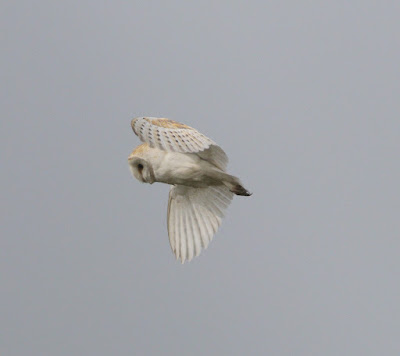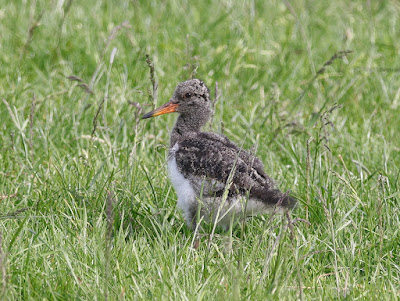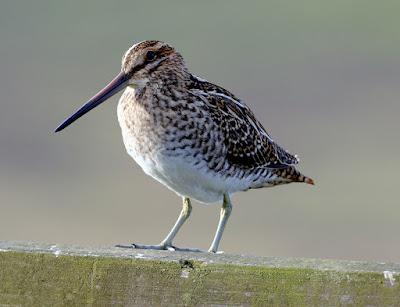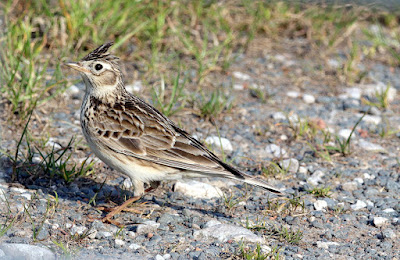There’s not a lot to report from this morning’s birding sortie but then it is sleepy mid-June.
The regular Barn Owl flew over someone’s garden and past their lounge window. That’s a pretty good bird for anyone’s garden list.
Barn Owl
I stopped at Gulf Lane to inspect the bird seed cover crop and where pretty soon we’ll be catching more Linnets, a few Goldfinch and one or two other species. There’s been a tremendous surge of growth in the six or seven weeks since the farmer sowed the field during which there’s been zero rain with lots of sunny days. At the end of July we’ll cut a 100 ft ride for single panel nets through the crop and away we go with Linnet catching through until March.
Bird Seed Cover Crop
I saw six or eight Goldfinch and a couple of Linnets along the edge of the dried up ditch plus a singing Whitethroat. The Oystercatchers bred successfully here but then moved their young across the fields and towards the shore 200 yards away.
Goldfinch
Whitethroat
Nearby and at the roadside Buzzard nest, one of the adults tried to hide but didn’t fly off so there’s a good chance there are one or two nestlings ready for fledging. Close by, a Kestrel and a singing Yellowhammer. Yellowhammers breed rather late around here so it’s not unusual to have them singing way into August.
Buzzard
Yellowhammer
At Conder Green it’s “as you were” with the breeding birds; 2 pairs of Common Tern, 5 or more pairs of Oystercatcher and 1 pair of Avocets. Goodness knows what the Tufted Ducks are up to with as far as I know a zero count of ducklings from 10-20 paired adults that have been around all year.
A number of the Oystercatchers were busy with their “piping” rituals. At some unknown prompt the birds suddenly decided to display with up to six or seven taking part but three captured in the picture below. The ritual is a way of defending pairs’ territories and consists of the Oystercatchers bowing their heads up and down with their beaks facing the ground while making long, high-pitched piping sounds. The shrill piping sounds are often directed to their neighbours. Sometimes they chase their neighbours or intruders away, piping loudly as they go. Note the bowed heads and open bills.
Oystercatchers
Noticeable today was an increase in Redshanks as inland and upland birds return to the coast. I counted 60 Redshanks this morning as well as 4 Black-tailed Godwits. Strange as it may seem the somnolence of summer breeding for passerines occurs at the same time as wading birds begin to migrate. By mid June many northern waders have finished their breeding with the adult birds the first the first to feel the southerly urge.
The few passerines in the immediate area were noted as 3 Whitethroat, 4 Reed Bunting, 4 Sedge Warbler, 2 Reed Warbler, 2 Pied Wagtail, 1 Blackcap, 1 Lesser Whitethroat and 2 Tree Sparrow.
It’s sad to say that 9 Swift flying around the pool and the hedgerows was my best UK count of the year.
Linking today to Anni's Blog and Eileen's Saturday.







































































.jpg)













